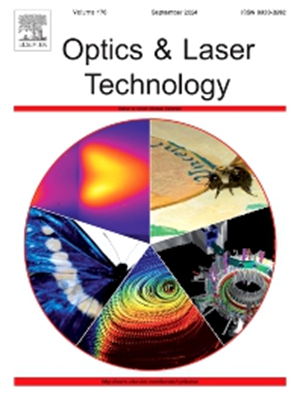光子集成电路上的微透镜使柔性封装和光隔离器集成成为可能
IF 4.6
2区 物理与天体物理
Q1 OPTICS
引用次数: 0
摘要
本文提出了一种多功能微透镜集成平台,旨在解决光子集成电路(pic)中的关键封装挑战,特别是在提高耦合效率,增加工作距离以及实现外部光学元件(如隔离器)的混合集成方面,这些器件难以单片集成。我们首先描述了带有PICs的微透镜的多种集成策略,以便在与光纤阵列接口时实现宽松的对准公差和扩展的工作距离。为了演示该平台的可能性,我们将详细介绍两个特定的用例。第一个涉及用于o波段数据通信应用的长工作距离扩展波束接口,其中微透镜PIC与微透镜连接器相匹配,实现3.8 mm的工作距离,并且由于透镜的集成,每个接口的额外插入损耗为0.85 dB。这种配置提供了更好的横向和纵向对中公差,使其非常适合可插拔连接器应用。第二个用例演示了在c波段PIC的耦合接口内集成光隔离器,实现了隔离器插入损耗为1.2 dB, 1db宽带宽为80 nm,在目标1540 nm波长处消光比为-20 dB。总之,这些用例突出了基于微透镜的解决方案在满足PIC封装要求方面的潜力,提供了增强的容差管理,并为复杂光学功能的混合集成提供了新的可能性。本文章由计算机程序翻译,如有差异,请以英文原文为准。

Microlenses on photonic integrated circuits enable flexible packaging and optical isolator integration
This paper presents a versatile microlens integration platform designed to address key packaging challenges in photonic integrated circuits (PICs), particularly in enhancing coupling efficiency, increasing working distance, and enabling the hybrid integration of external optical components, such as isolators, which are difficult to integrate monolithically. We first describe multiple integration strategies for microlenses with PICs toward achieving relaxed alignment tolerances and extended working distances when interfacing with fiber arrays. To demonstrate the platform’s possibilities, we detail two specific use cases. The first involves a long working distance expanded beam interface for O-band datacom applications, where a microlensed PIC, paired with a microlensed connector, achieves a 3.8 mm working distance with a modest additional insertion loss of 0.85 dB per interface attributed to integration of the lenses. This configuration offers improved lateral and longitudinal alignment tolerances, making it well-suited for pluggable connector applications. The second use case demonstrates the integration of an optical isolator within the coupling interface of a C-band PIC, achieving an isolator insertion loss of 1.2 dB and a broad 1 dB bandwidth of 80 nm, with an extinction ratio of -20 dB at the target 1540 nm wavelength. Together, these use cases highlight the potential of microlens-based solutions to address PIC packaging requirements, offering enhanced tolerance management and enabling new possibilities for hybrid integration of complex optical functionalities.
求助全文
通过发布文献求助,成功后即可免费获取论文全文。
去求助
来源期刊
CiteScore
8.50
自引率
10.00%
发文量
1060
审稿时长
3.4 months
期刊介绍:
Optics & Laser Technology aims to provide a vehicle for the publication of a broad range of high quality research and review papers in those fields of scientific and engineering research appertaining to the development and application of the technology of optics and lasers. Papers describing original work in these areas are submitted to rigorous refereeing prior to acceptance for publication.
The scope of Optics & Laser Technology encompasses, but is not restricted to, the following areas:
•development in all types of lasers
•developments in optoelectronic devices and photonics
•developments in new photonics and optical concepts
•developments in conventional optics, optical instruments and components
•techniques of optical metrology, including interferometry and optical fibre sensors
•LIDAR and other non-contact optical measurement techniques, including optical methods in heat and fluid flow
•applications of lasers to materials processing, optical NDT display (including holography) and optical communication
•research and development in the field of laser safety including studies of hazards resulting from the applications of lasers (laser safety, hazards of laser fume)
•developments in optical computing and optical information processing
•developments in new optical materials
•developments in new optical characterization methods and techniques
•developments in quantum optics
•developments in light assisted micro and nanofabrication methods and techniques
•developments in nanophotonics and biophotonics
•developments in imaging processing and systems

 求助内容:
求助内容: 应助结果提醒方式:
应助结果提醒方式:


